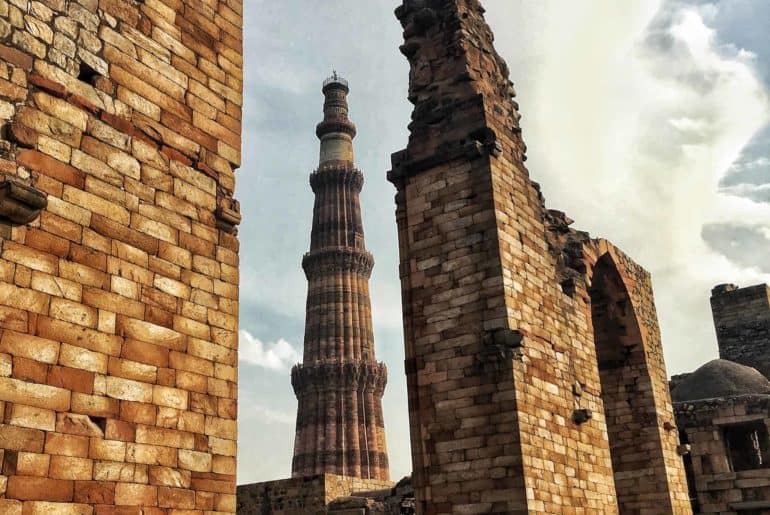Slowly yet steadily, we see our monuments wearing and tearing away, taking away the glorious heritage that had been bestowed upon us. Let us look at what our role, as the posterity, should be.
Concentrated with a vast array of monuments and temples, the capital city of India, Delhi, presents itself as a hub of the Indian heritage. From the Red Fort in the North to the Tughlaqabad Fort in the south, comprising Humanyun’s Tomb, Jama Masjid, Jantar Mantar and numerous others lying in between, Delhi’s archaeological diversity knows no bounds. However, it is devastating to see the reverence for this diversity gradually fading away.
Do you remember the last time you visited Qutub Minar, or maybe Lodhi Garden with your friends or family? You must have noticed the walls and rocks, and even tree trunks, scribbled with hideous quotes like “Raju loves Pinky” or “Anjali + Prachi BFFs forever” or maybe simply “Gopal was here”. Honestly, it is highly doubted that one would care to find out whether Gopal visited Lodhi Garden or not.
It is hard to understand the thrill behind tainting these structures of such immense historical importance. One may say that the person wishes to “immortalise” his or her love for the other. But the question remains- at what cost? I find it fascinating to note that the scribbling is even found in places which is almost impossible to access without external support. I must say, I commend the dedication.
Very often people tend to go beyond simply scribbling their names or other abusive words; they use sharp objects and engrave them, especially where there is plastered work. One may not realise this but all these scribblings and engravings not only diminish the aesthetics of the monument but also degrade the quality, basically weakening the structural integrity following the pre-existing wear and tear resulting due to the time factor.
“Institutes like the Archeological Survey of India (ASI), Aga Khan Trust, and Indian National Trust for Art and Cultural Heritage (INTACH) have been crucial in the renovation and restoration of our age-old monuments. It is sad to see the disservice we, as a society, render to these places of antiquity by defacing them or littering them. A feeling of pride that comes from our cultural heritage and history can only be sustained if we individually try to preserve what our ancestors have left behind,” says Shankar Tripathi, a history student from Hindu College.
Apart from this observed vandalism, the disregard towards the heritage can be seen in other forms. Go back to the last time you visited one of these monuments. Do you remember noticing young couples cozying up in some corner thinking they are invisible to the common eye? All these historical sites have today become merely a hotspot for lovers to unite being completely aloof towards the aesthetics that surround them.
Most people these days aren’t aware of the glorious history preceding these monuments; the journey that led them to exist in the first place. This tends to bring about a lack of appreciation for what these structures truly stand for. Heritage means different things to different people. The material traces found in the monuments are now merely an object of entertainment. Disheartening as it is, every day we stray further away from this heritage of our country, remaining ignorant towards its importance and values.
Heritage awareness remains an integral component of heritage conservation. Lack of such awareness among the public at large is one of the major reasons behind the damages faced. There is a serious need to change the public attitude and re-establish the feeling of respect and pride that we, as citizens of India, must experience towards the glorious cultural heritage that our ancestors have bestowed upon us.
Feature Image Credits: Surbhit Rastogi
Aditi Gutgutia





Comments are closed.